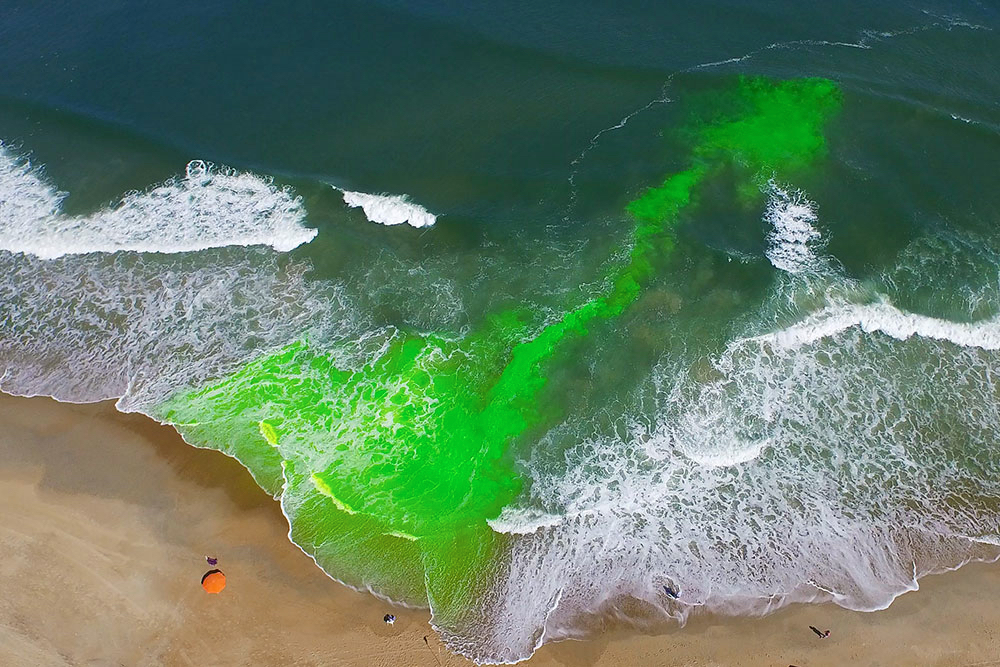 An Outer Banks rip current shown with green dye. Part of a National Weather Service study.
An Outer Banks rip current shown with green dye. Part of a National Weather Service study.We had nice warm day today on the Outer Banks—a great day to get an ocean swim in. Beautiful ocean temperatures. The surf was beginning to come up but it wasn't too bad.
What is a Rip Curent
Today though, might be the last day to get in the ocean for a few days, though. Although Hurricane Jose looks like it's going to bypass the Outer Banks, it's it's going to be kicking up some pretty rough surf and with that there's a high risk of rip currents.
If there is a number one danger to swimming in the ocean, it has to be rip currents.
There is a lot of ongoing study trying to understand what causes them although some things are known. They are much more likely to occur during high tide and they tend to occur in the vicinity of sandbars.
As a wave breaks on the beach, it rolls off the sand and back out to sea. Generally the waves retreat at a fairly even pace, but if some of the water moves faster than water on either side, a rip current may form.
As an example, if there is a gap in a sandbar, water will move more quickly through the gap than the water next to it. Wave action is the number one factor causing rip currents. The bigger the waves, the more likely they will form.
There are quite a number of factors that can create a rip current. However, although common, they are not everyday occurrences.
Safety Tips for Swimmers
Rip currents are not dangerous to swimmers! They frequently catch swimmers by surprise, and when they do, panic often sets in. The danger is in panicking and trying to fight the current, which will quickly exhaust even the strongest swimmer.
Some things about rip currents that are important to know.
Do not fight the current—it is far stronger than any swimmer. Either swim with the current until it dies out—that could take you a fair ways offshore. Or swim parallel to the beach.
A rip current occurs on the surface of the water (That's one way that it's different from undertow.) If too tired to swim or confused, float or tread water. Either way the swimmer's body will be supported because the current is on the surface.
With a little experience, it is possible to identify a rip current. Look for smooth water in the midst of the waves. Observe it closely; if there is an outward flow, that's a rip current...don't go in at that spot.
With Jose tracking up the coast after the weekend, waves are forecast to be 8-12' so ocean swimming is not a good idea, but for other times, a little knowledge about rip currents should go a long way.







